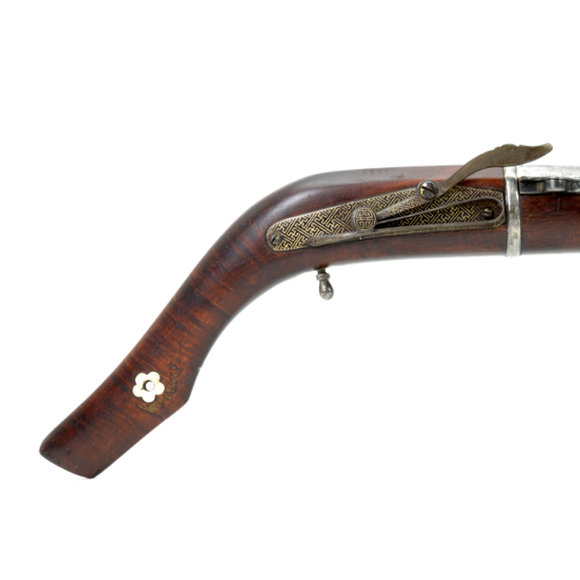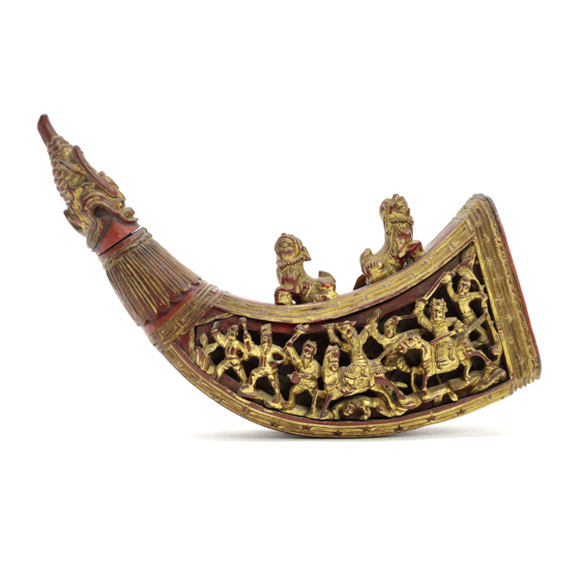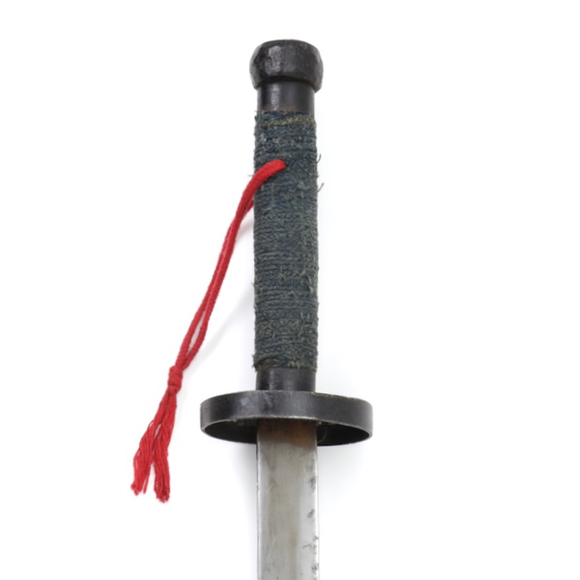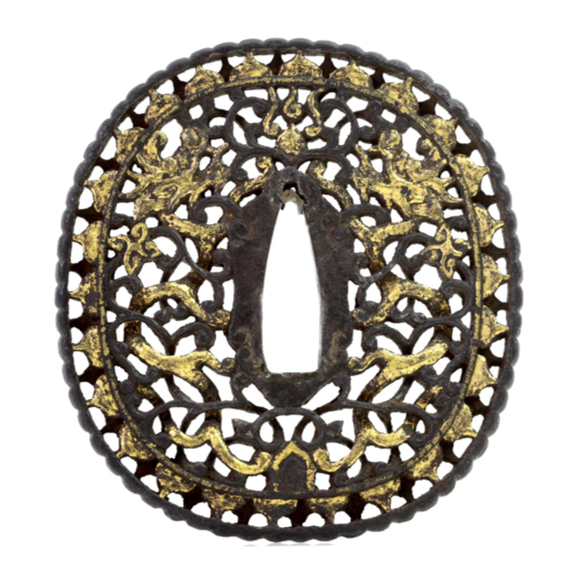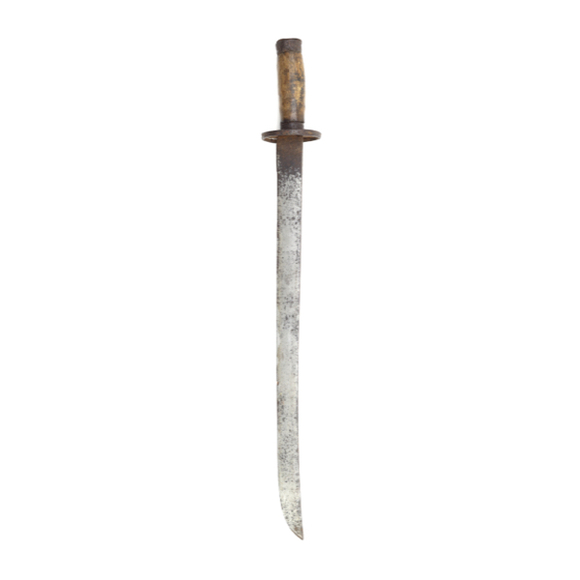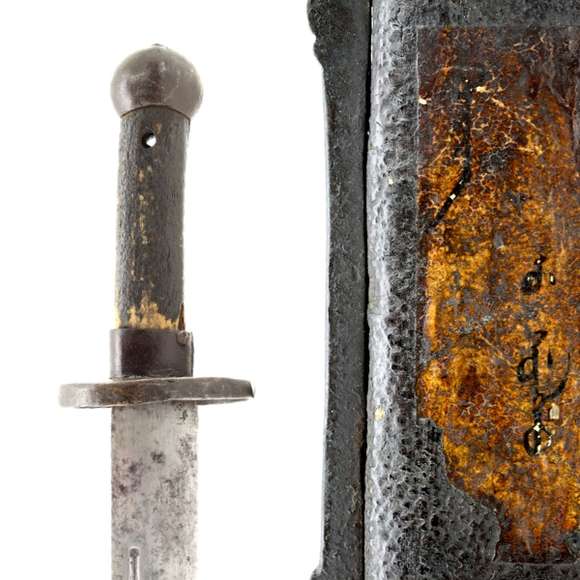With a golden damascened lock of the Indo-Portuguese type.

45 cm
28.5 cm
Base 6 mm
Widest part 5 mm
5 cm from tip 3.5 mm
Base 33.5 mm
Widest part 40 mm
552 grams
Iron, steel, brass
Qing dynasty, China
19th century
Introduction
The spear is called qiāng (鎗) in Mandarin, its head is a qiāng tóu (鎗头). They have been an important weapon in Chinese warfare, used by the military, village militia, and peasant rebels alike, in some places until well into the 20th century.
Chinese spearheads are very hard to date because their design changes over the years are quite subtle, with many styles overlapping as well. Also, very few ever come with good provenance to help date and attribute them. They also have no unexposed areas from which to date the patina like sword tangs.
Hallmarks of Chinese manufacture are a socketed construction, a slender neck, and a leaf-shaped head. There is usually a bolster on the neck, sometimes in the form of a brass or iron polyhedron or some other cast brass structure. Blades always tend to be forge folded, often with inserted edges.
For more about spears, see my article: Spears of the Qing dynasty.
This example
A classic example of a Chinese spear, probably Qing military.
It features a blade with a waisted profile at the base that leads up to a widening, then tapers to a point. It is mounted on a socket with a hole for a securing nail.
In-between socket and blade is a cast brass element featuring a tube, a polyhedron and a triangular structure all cast in one piece of brass. It is decorated with dimples with circles around it, often found on such spearheads.
Unusual is the decoration of each face of the polyhedron with a sunburst motif. It resembles the "Blue Sky with a White Sun" motif that was adopted as flag and emblem by the Kuomintang in 1895. However the "Blue Sky with a White Sun" design very deliberately has 12 rays to symbolize the 12 monts and the 12 traditional Chinese hours, and the design on the spear has 10 rays instead.
In decent condition. Blade with deep patina and some pitting. Tip is rounded from wear.






Probably of Southern origin, with a straight blade and flaring tip.
In the style of northern work of the 16th and 17th centuries
A simple utilitarian weapon, probably made for rural martial artists or militia.
A standard pattern Qing military saber, but with the rare addition of a label in Manchu.

